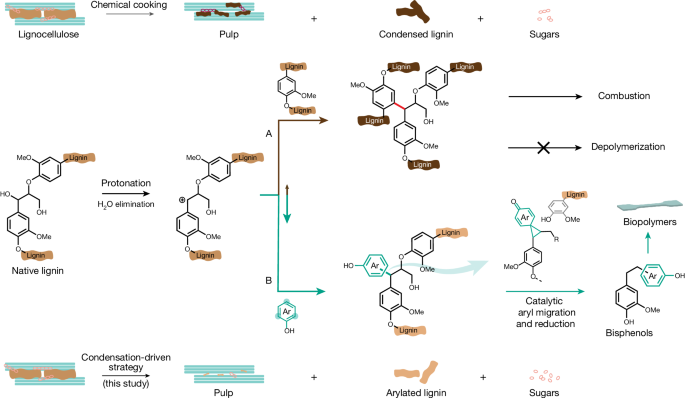Selective Lignin Arylation for Efficient Biomass Fractionation and Production of Eco-Friendly Bisphenols
The content discusses a novel approach for the valorization of lignocellulosic biomass, which is mainly composed of hydrophobic lignin and hydrophilic polysaccharides. Conventional biomass processing methods often lead to detrimental crosslinking of lignin, hampering downstream processing.
The authors present a strategy that leverages the proclivity of lignin towards condensation reactions. By directing the C-C bond formation through a catalytic arylation pathway using lignin-derived phenols with high nucleophilicity, they are able to selectively condense the lignin fraction. This selectively condensed lignin can then be unlocked in a tandem catalytic process involving aryl migration and transfer hydrogenation, converting it into benign bisphenols (34-48 wt%) that can replace fossil-based counterparts.
The delignified pulp from cellulose and xylose from xylan are co-produced, which can be utilized for textile fibers and renewable chemicals, respectively. This condensation-driven strategy represents a significant advancement in biomass valorization, complementing other promising monophenol-oriented approaches targeting valuable platform chemicals and materials.
Налаштувати зведення
Переписати за допомогою ШІ
Згенерувати цитати
Перекласти джерело
Іншою мовою
Згенерувати інтелект-карту
із вихідного контенту
Перейти до джерела
www.nature.com
Selective lignin arylation for biomass fractionation and benign bisphenols - Nature
Ключові висновки, отримані з
by Ning Li,Kexi... о www.nature.com 05-29-2024
https://www.nature.com/articles/s41586-024-07446-5
Глибші Запити
